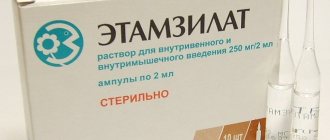3486Pavel
Hemobartonellosis is an infectious disease caused by the bacterium Haemobartonella felis (eperitrozoon). It is often called infectious anemia. This is one of the most dangerous diseases for a pet, in particular due to the fact that the symptoms of hemobartonellosis in cats may practically not appear and the animal will not receive medical assistance in a timely manner. The disease can overcome the carrier for many years or lead to his death in a short time, so you need to know about this disease and monitor the condition of your pet.
An important feature of the pathogen is that it is an intracellular parasite that does not survive in the environment. This is the only factor that restrains the massive development of hemobartonellosis. It is transmitted only directly through contact with the carrier.
© shutterstock
Main reasons
Veterinarians note that the main source of the problem in cats is moderate to severe trauma. If there is a violation, intra-abdominal, gastric or intestinal bleeding is most often observed. Pets that have access to the street are at risk.
Signs of deviation may also occur for other reasons, such as:
- Tumors in the peritoneum. Neoplasms can be malignant or benign, resulting in severe gastric bleeding. In most cases, oncology is diagnosed in older cats.
- Hematoma. It is accompanied by a limited accumulation of blood, while hematomas often burst and rupture, as a result of which the cat releases blood clots from the uterus and other internal organs.
- Coagulopathy. With pathology, blood clotting is impaired and internal bleeding occurs. The problem does not go away on its own and urgent treatment is required to help stop the bleeding. Such a deviation is typical for poisoning with rat poison and occurs against the background of other reasons.
What types are there?
The non-traumatic type includes a condition caused by atherosclerotic changes in the blood vessels of an animal.
Symptoms of internal bleeding in cats may vary, depending on the type of pathology and the degree of damage. Pets may have uterine, gastric, intestinal and other forms of abnormalities. In veterinary medicine, it is customary to classify the secretion of blood inside the cat’s body into the following types:
- Traumatic bleeding. It is a consequence of mechanical damage to the choroid plexuses. They arise due to a strong blow, rupture of an internal organ, compression or crushing.
- Non-traumatic. Progresses against the background of vascular pathology or damage to nearby tissues. This type of internal bleeding in cats also includes cancerous tumors, inflammation with accumulation of pus, and atherosclerosis.
Pathology is also divided according to the type of vascular damage into arterial, capillary, venous and mixed. Internal bleeding poses a danger to the health and life of a pet. If you do not understand and determine the cause of the violation in time, then there is a high probability of the pet’s imminent death. Therefore, each owner needs to know the clinical picture of internal bleeding.
How can you cure hemobartonellosis in cats?
It is worth considering that with timely initiation of treatment, the prognosis is still favorable, the disease is treatable. However, if the disease is not treated, then, unfortunately, the statistics of animal mortality from it are very sad. In the treatment of the disease itself, not everything is so simple either. The most important detail that is taken into account by the veterinarian is the fact that in order to select treatment for the animal, based on the position of “least traumatic”, therefore, prescribe drugs that would help the cat recover faster, but also would not cause a number of other problems for her in parallel. already tormented by illness.
The prescribed treatment should not be toxic to the cat's body. Also, the veterinary doctor is faced with the task of being able to select just such a drug that would act selectively, namely, only by exerting its influence on pathogenic microorganisms, finding them everywhere. Moreover, the prescribed medicine should not introduce any side effects into the body along with its administration, or negate the possibility of their occurrence.
What drugs are most often used in veterinary medicine to treat hemobartonellosis in cats?
The most common drug that is used in the treatment of the disease is Baytril. This medicine has a rather complex effect on the body of a sick animal, capable of suppressing most pathogens. Moreover, the medicine meets all the requirements put forward for its effect on the microflora and body of the cat.
The medicine is quickly redistributed in the cat’s body, delivering the main blow to microorganisms, while acting in a targeted manner. Also, the drug does not affect the reproductive function of the animal in the future, which is a significant and important factor in the subsequent life and activity of the animal. Also, when treating an illness, you can use tetracycline antibiotics three times a day, and you can also use chloramphenicol drugs three times a day, and you can also use a medicine such as azidine.
How long does the rehabilitation course last for cat hemobartonellosis?
The course of rehabilitation for an animal diagnosed with feline hemobartonellosis usually lasts from five days to two weeks. The period of treatment can undoubtedly be determined only by a veterinarian and by the clinical signs observed in the animal. During treatment, the animal slowly but surely comes to its senses, its blood test values stabilize, the infection is suppressed, and the immune system is restored again. The cured cat or cat returns to its normal flow of life.
Alarming symptoms
Severe internal bleeding in cats can cause bruises and hematomas on the skin. With obvious blood loss, during which the cat’s intestines, stomach and other vital internal organs bleed, the following signs are observed:
With an intense pathological process, the animal may urinate with blood.
- discharge of pinkish foamy blood;
- vomiting in black masses;
- loose stools that resemble tar;
- bloody discharge from the anus;
- blood in urine.
It is more difficult to identify internal bleeding of a hidden nature, which remains unattended for a long time and is not treated. It is possible to diagnose such a disorder based on the following clinical picture:
- severe shortness of breath, not associated with the load on the cat’s body;
- severe fatigue;
- pale mucous membranes;
- abdominal enlargement.
Diagnosis of the disease hemobartonellosis in cats
Even if you have all the necessary book knowledge, do not try to make an accurate diagnosis for your pet yourself; leave this task to experienced and highly professional specialists. But, if there is still no immediate opportunity to send the animal to a veterinarian, then you, the owners, can follow the following tactics, which will allow you to determine the disease.
Tactics that allow owners to identify hemobartonellosis in cats
You will need to do the following:
- The first thing is to look very carefully, even scrupulously, at your animal’s coat, as well as the very condition of your pet’s skin. Because during oxygen starvation, the entire body suffers, and this, in turn, manifests itself in the fact that the animal’s skin becomes yellow, and even has a slightly orange tint. In addition, the skin loses its elasticity, becoming much harder even to the touch.
- second, you will need to conduct an independent inspection of the entire animal, paying special attention to the paw pads. Check them more closely for any wounds, scratches or bites.
- third, it will be necessary to check the mucous membranes of the animal. This needs to be done carefully and as least painfully as possible for your pet: pull back the skin near the mouth and see what color his gums are. With this disease they often become pale.
- fourth - of course, do not forget to pay close attention to the animal’s body temperature! After all, it may not be elevated, but subfebrile, that is, when there is a slight long-term increase in it, making the indicators above normal.
- fifth - pay attention to the voice of your pet, because it can be hoarse during illness;
After following all these instructions, you will be able to at least roughly understand the condition of your cat. If, during the examination, it turns out that most of the symptoms are the same, then treatment of the animal must begin immediately!
Diagnostic methods
If the doctor suspects such a condition in a fluffy dog, then he must undergo an ultrasound of the organs located in the peritoneum.
As soon as your cat develops symptoms of internal bleeding, you should immediately contact a veterinary clinic, where the pet will be examined and a comprehensive examination will be prescribed to determine the source of the problem and assess its severity. In case of violation, the following procedures must be followed:
- X-rays of the peritoneum;
- puncture of the abdomen using a needle or syringe and laboratory examination of the resulting sample;
- detailed blood test;
- coagulogram;
- ultrasound diagnostics of the abdominal organs;
- CT and MRI.
Veterinarians warn that a comprehensive examination is carried out only after internal bleeding has stopped and the cat’s condition has stabilized.
Treatment: basic methods
Blood-stopping drug: which one to choose?
The condition of the animal, which occurs without complications, can be normalized with the help of a set of drugs.
It is possible to treat mild to moderate disorders with medication, using drops, oral and other medications. Medicines provide symptomatic therapy and help relieve pain and other unpleasant sensations in a cat. A sick pet is injected into a vein with a special solution, which maintains normal blood pressure and improves blood supply to tissues and internal organs. This therapeutic measure is especially important for cats who have developed a state of shock due to internal bleeding. In case of pathology, it is important to take vitamin K, especially in cases of blood loss associated with poisoning by rat poison and other anticoagulants.
When is surgery necessary?
In case of heavy internal bleeding, when the pet has lost a lot of blood and the drugs are ineffective, surgery is prescribed. When severe anemia occurs, the pet is transfused with donor blood to stabilize the condition. Surgery is mandatory for tumors, especially malignant ones, that compress blood vessels and vital organs. Surgery can also be performed in case of heavy bleeding, the causes of which cannot be determined and other treatment methods are ineffective. If the integrity of the internal organ is damaged or its function is impaired, then an operation is performed, after which the bleeding will stop. If necessary, the uterus, one damaged kidney and other organs without which the pet can live can be removed.
Care and recovery period
When internal bleeding occurs, the pet needs to be given maximum attention, since this is a lot of stress for the animal. If there is a violation, it is important to place the cat in a warm environment where he will be comfortable and safe. If the blood loss is associated with a fracture, then immobilize the cat’s injured limb and quickly deliver it to a veterinary clinic. Equally important is post-operative care to help your cat recover faster. To do this, the pet is given a clean and warm place, is not allowed to suffer from hypothermia and is on a diet, especially if the development of internal bleeding is affected by gastrointestinal pathologies.
Causes of the disease
Like many infectious diseases, hemobartonellosis is transmitted by pathogens and vectors. There are several main mechanisms of infection :
- Ingestion of blood and saliva from a cat infected with hemobartonellosis. If a cat is often outdoors, then she may get into fights with other cats over territory or a female. In this case, wounds inflicted by an infected animal will most likely contain infection.
- Bites of hemobartonellosis vectors. Many microorganisms, before entering the body of the main host, use the “services” of vectors. For cats, the most dangerous ones are fleas and ticks. The former can get on the cat's fur from another animal or into the soil, where they often end up after the death of the previous carrier. In the spring, ticks lie in wait for their prey on tall blades of grass and can also be carriers of a dangerous disease. In some cases, mosquitoes act as carriers of hemobartonellosis.
- Some veterinary clinics do not handle equipment carefully enough, as a result of which pathogenic hemobartonellosis cells may appear on instruments or in blood for transfusion. So a harmless visit to the veterinarian will turn into a serious illness.
- If a cat is already infected with the hemobartonellosis bacterium, she will likely pass it on to her kittens during pregnancy or while nursing. Since kittens have not yet formed a stable immune system, they die in the shortest possible time.
Hemoperitoneum
Hemoperitoneum (haemoperitoneum; Greek haima blood + Latin peritoneum peritoneum) is an accumulation of blood in the abdominal cavity.
Wounds and closed trauma to the abdomen, accompanied by damage to the vessels of the mesentery, liver, spleen and other organs, as well as the vessels of the abdominal wall, lead to the development of hemoperitoneum. It can also occur as a result of postoperative bleeding in patients with reduced blood coagulability (for example, with obstructive jaundice), as a result of slipping or cutting through a ligature applied to the vessels of the mesentery or omentum, with a disturbed ectopic pregnancy, ovarian rupture, and others.
The clinical picture depends on the nature of organ damage, the intensity of bleeding into the abdominal cavity and the amount of blood loss.
In acutely occurring hemoperitoneum, a picture of acute anemia is observed: pallor of the skin and visible mucous membranes, thirst, cold sweat, adynamia, darkening of the eyes, dizziness, fainting, there may be motor agitation; Due to painful irritation of the dome of the diaphragm that has gushed out blood, the patient tends to take a sitting position (the vanka-stand-up symptom), which reduces the pain. The pulse is frequent (up to 120-140 beats per minute) with weak filling, blood pressure decreases. The abdomen participates in breathing to a limited extent, is soft and moderately painful on palpation, and there are symptoms of peritoneal irritation. In the sloping parts of the abdomen there is dullness of percussion sound, percussion is painful, bowel sounds cannot be heard. During a digital examination of the rectum, a protrusion of its wall may be detected; during a vaginal examination, the fornix is flattened and painful; the posterior fornix may bulge. When examining peripheral blood, there is a decrease in hemoglobin, the number of red blood cells, and the hematocrit value. In the initial stages of development of Hemoperitoneum, changes in peripheral blood are not pronounced. The more time has passed since the onset of bleeding, the more clearly the clinical symptoms of Hemoperitoneum are revealed. When bleeding into the abdominal cavity from small vessels in the postoperative period, hemoperitoneum develops slowly, abdominal symptoms are often erased and difficult to detect against the background of changes associated with surgical trauma. With Hemoperitoneum, a Frenicus symptom may be observed - pain in the area of the shoulder girdle and shoulder blade, usually on the left, due to irritation of the endings of the sensory nerves of the diaphragm by blood pouring into the abdominal cavity (see Frenicus symptom).
The diagnosis with a clear clinical picture is beyond doubt. In case of erased clinical phenomena of Hemoperitoneum, laparocentesis (see) with the introduction of a groping catheter and peritoneoscopy (see), as well as puncture of the posterior vaginal fornix, have diagnostic value. The introduction of a “groping” catheter and examination of the blood obtained from the abdominal cavity makes it possible to establish the nature of the bleeding - whether it continues or has stopped, this is judged by the Rouvilois-Gregoire test (see Hemothorax). Data on the specific gravity of blood are of great importance in determining the amount of blood loss. Surgical tactics in each specific case depend on these diagnostic techniques.
Patients with suspected Hemoperitoneum, before establishing a final diagnosis, require careful dynamic monitoring with measurement of pulse rate and blood pressure every 1-2 hours, determination of the amount of hemoglobin and the value of peripheral blood hematocrit. During the diagnostic process, painkillers and narcotics that mask the symptoms of an acute abdomen are contraindicated (see).
Hemoperitoneum must be differentiated from retroperitoneal hematoma and hematoma of the anterior abdominal wall, in which there are no symptoms of free fluid in the abdominal cavity.
X-ray diagnosis of hemoperitoneum is aimed at establishing the presence of free fluid in the abdominal cavity. The main methods of investigation for hemoperitoneum are fluoroscopy and radiography of the abdominal cavity. Pneumoperitoneum (see), and even more so angiography of the vessels of the abdominal cavity are permissible only if it is necessary to preoperatively clarify the nature of damage to the abdominal or pelvic organs or to first locate a bleeding vessel. These studies can only be carried out if the patient’s condition is satisfactory, with appropriate equipment and specially trained personnel.
Internal bleeding in dogs is quite common and occurs due to injury or various diseases. Blood does not leave the body through a wound, but remains inside, and subsequently flows out of one of the natural cavities. Depending on the causes of its occurrence, bleeding is divided into primary and secondary. There are venous, arterial, capillary and mixed bleeding. The most dangerous is arterial. Blood loss occurs very quickly, usually there is not enough time to deliver the animal to a medical facility and death occurs.
Home care
Hemoperitoneum is a medical emergency and veterinary care should be provided as quickly as possible. Keep your pet in a calm and comfortable environment. Minimize stress until you can get to the veterinarian. Keep your pet warm. If injury is suspected, use caution when moving your pet. Internal bleeding in a dog is a potentially life-threatening situation. The abdominal (peritoneal) cavity is a large space with a large number of blood vessels. If a large amount of blood enters this area, the muscles of the abdominal wall are stretched and bloating occurs. Bloating can also cause discomfort and pain, leading to anxiety and stress in your pet. Rapid expansion of the abdominal cavity can also put pressure on the diaphragm and thus interfere with normal breathing. Rapid loss of blood in the abdominal cavity also leads to a decrease in blood pressure and tissue perfusion, leading to the development of shock. Prolonged bleeding can lead to a decrease in the volume of circulating red blood cells, which can result in acute (sudden) anemia. If veterinary care is not provided promptly, rapid blood loss can lead to death. Relatively slow blood loss is more common. Chronic (long-term) or intermittent blood loss usually occurs more slowly and its symptoms are less noticeable. If blood loss occurs slowly, the body may reabsorb free blood from the abdominal cavity. Thus, the amount of blood in the abdominal cavity may be quite small. This condition does not pose an immediate threat to life, but may be a signal of a serious illness. It is critical to examine the fluid in the abdominal cavity and evaluate its cellular composition. If the animal has normal blood clotting parameters, bleeding in the abdominal cavity will stop on its own. Blood clots will form and stop the bleeding. Sometimes, an animal may lose consciousness due to acute blood loss and then slowly recover due to blood clot formation and the body's self-healing mechanisms. In such a situation, animals at first appear pale and weak, but over time they become stronger and their mucous membranes turn pink again. Owners may describe episodes of weakness alternating with recovery. However, blood clots can be dislodged, especially during movement or various manipulations of the animal. If the clots are dislodged, bleeding may start again. In many cases of hemoperitoneum due to abdominal trauma, the bleeding may stop on its own.
Varshavskoe highway, 125 building 1. tel.
If a dog has damaged a nail, every owner should know how to stop the bleeding. There are simple methods that do not require special training.
Most often, damage to the living part of the claw occurs during trimming. There are also cases when the dog itself is injured. In any case, in case of damage of various kinds, measures must be taken. Methods to stop bleeding will depend on the location.
Every owner should know how to provide first aid, for example, if a dog’s tooth is bleeding, or how to stop it if there is a pulp injury. It is worth noting that the actions will be completely different. In the first case, you just need to temporarily press the gum with a cotton swab.
But you can’t do that with a paw. The fact is that the pulp (the living area of the claw) is quite sensitive and when cut it hurts a lot. Therefore, it is not recommended to put pressure on it under any circumstances.
The dog simply won’t let you do this; it will bite and break free. But don't panic. It is also possible to stop bleeding in this area.
[custom_ads_shortcode1]
Symptoms of internal bleeding in a dog
Knowing the symptoms of internal bleeding allows you to identify the problem in a timely manner. The health and life of the animal depends on the speed of contacting a medical facility. Remember, the problem is unlikely to go away on its own; qualified help will be required. You should also not self-medicate. After all, an accurate diagnosis can only be made through laboratory tests.
Symptoms of internal bleeding in a dog are noticeable upon careful examination and observation of the pet’s behavior. Direct signs are:
- Weakness.
- Presence of blood in urine and stool.
- Bloating.
- Bruises under the skin.
- Increased breathing.
- Vomiting and nausea.
- Paleness of the mucous membranes.
- Constant thirst.
As mentioned above, it is quite difficult to accurately determine the symptoms of internal bleeding in a dog on your own. Only an experienced veterinarian can make a correct diagnosis. If the symptoms listed above appear, you must immediately consult a doctor, as delay threatens the life of the animal.
Use of Potassium Permanganate
How to stop bleeding in a dog at home? For this you can use potassium permanganate. What is this substance?
Powder of small crystals of dark purple color. This method is recommended by veterinarians. Most often, this is how clinics stop bleeding from a claw.
What will be needed for the procedure?
- Some warm boiled water.
- Potassium permanganate itself.
- Cotton swabs.
The procedure itself is simple. You will need to dilute potassium permanganate in water. Afterwards, take the prepared swab, dip it in the solution and apply it to the wound.
Hold for about 30 seconds. Next, see if the bleeding has stopped. If this does not happen, then the procedure is repeated.
[custom_ads_shortcode3]
How to check for internal bleeding in a dog
Internal bleeding in animals can be obvious or hidden. In the first case, you can detect it yourself, but only a qualified veterinarian can confirm the diagnosis. If the bleeding is hidden, its independent detection is possible only with careful monitoring of the dog’s condition.
With obvious bleeding, all the fluid enters the gastric cavity or interstitial space. If the problem is related to vascular disorders in the stomach, intestines and lungs, blood appears in the animal’s saliva when coughing. The mass released during vomiting is similar to coffee grounds. In addition, blood is noticeable in stool and urine.
It is much more difficult to detect hidden bleeding. It is necessary to carefully monitor the dog's condition. You should be wary if you notice shortness of breath, bloating, excessive fatigue, decreased activity and pallor of the mucous membranes. Elastic hematomas appear on the bends of the knees. Eyes turn red.
Internal bleeding can be accurately determined by a thorough external examination by a veterinarian, a puncture, and an abdominal x-ray. The latter type of laboratory test detects the presence of fluid in the stomach, but is not able to accurately determine its type.
The puncture allows you to get a more detailed picture of what is happening. Fluid is taken from the animal's stomach for subsequent analysis to determine what type of bleeding is (acute or chronic) and the amount of fluid lost.
Diagnostics may also include:
- Platelet count test.
- Complete blood test.
- Urine and stool analysis.
- Serological analysis.
- Coagulability assay.
- Ultrasound of the abdominal cavity.
- Bone marrow examination.
If necessary, several types of diagnostics can be performed at once. It all depends on the symptoms present, the complexity of the case and the doctor’s recommendations.
Diagnostics
A complete medical history and physical examination are critical for a quick and accurate diagnosis. Your veterinarian may also recommend:
- Abdominal radiograph (x-ray)
An abdominal x-ray is a good test to see if fluid is present in the abdominal cavity, but the x-ray cannot distinguish the type of fluid. Abdominal radiographs can also identify mass lesions (tumors or hematomas). Unfortunately, the large volume of fluid in the abdominal cavity makes radiographic visualization more difficult.
- Abdominal puncture by puncturing the abdomen to obtain a sample for diagnostic evaluation
Puncture is the removal of fluid from the abdominal cavity for microscopic analysis. The withdrawn bloody fluid should not coagulate, since the blood in the peritoneal space quickly becomes defibrated (loses the ability to form a blood clot). When hemorrhagic (bloody) fluid clots, it usually means that a blood vessel has been inadvertently aspirated or that the current bleeding is acute and recently started.
Fluid analysis will show mostly red blood cells and white blood cells in quantities similar to those in peripheral blood. The hematocrit (number of red blood cells) is also similar to the peripheral blood hematocrit.
- Analysis of fluid from the resulting sample to accurately assess its cellular composition
- Complete blood count (assessment of blood loss)
A complete blood count (CBC) is an important test because it evaluates the levels of white blood cells and red blood cells. When hemoperitoneum is suspected, the hematocrit is used to assess the degree of blood loss (anemia). A complete blood count also provides information about whether the bleeding was acute or chronic. Changes in red blood cell morphology may indicate the presence of hemangiosarcoma or other malignancy. Depending on the animal's condition and initial test results, additional tests may be required. These may include:
Blood biochemistry is very useful for identifying additional lesions in the body. Animals with traumatic injuries (and sometimes cancer) will have significantly elevated liver enzymes. Kidney function should also be monitored.
- Study of hemostasis systems (blood clotting)
Blood clotting tests (coagulation tests) are especially important in young animals without signs of injury. If trauma and intra-abdominal (abdominal) tumor are ruled out, or if bleeding does not stop, a clotting test is necessary.
- Ultrasound examination of the abdominal cavity
An abdominal ultrasound is used to determine whether an abdominal tumor or hematoma is present. Unlike X-rays, fluid in the abdomen does not impair visualization of the internal organs. If a mass is found, an ultrasound-guided biopsy can be performed, but in many cases the biopsy is ineffective because the blood clots may look like tumors.
Care must be taken when performing a biopsy as bleeding may occur. Animals with spleen masses are at high risk of developing these problems.
[custom_ads_shortcode2]
What can cause internal bleeding in a dog?
There are several causes of internal bleeding in dogs. Subsequent treatment is selected depending on the factor that caused it. This also affects the condition of the dog. In some cases, severe bleeding can result in rapid death.
What can cause internal bleeding in a dog?
Bleeding leads to significant disruptions in the functioning of the animal’s internal organs. Minor blood loss does not quickly cause significant harm to the dog, but if not properly treated, it can have serious consequences. Significant damage to large vessels can lead to death.
With significant blood loss, pressure decreases, the functioning of the heart and all blood vessels deteriorates, anemia occurs, hemoglobin and the number of red blood cells decrease. Oxygen starvation of the tissues and internal organs of the animal develops. Metabolic processes in the body worsen. All this leads to the gradual death of cells.
There are several causes of internal bleeding:
- Injuries
The damage is characterized by rupture of various vessels in the internal organs. Blood loss is divided into fast and slow. In the first case, there is little time left to provide medical care to the animal.
If the injury is severe, there is significant damage to internal organs, and the animal can quickly die. With minor injuries and slow internal bleeding, there is a chance to save the dog by immediately seeking qualified medical help. Typically, various impacts injure the kidneys, spleen, liver or bladder.
- Bleeding disorder
It is most often observed in young dogs and practically does not stop on its own. Therapeutic procedures are required, including taking vitamin K, infusion of fresh frozen plasma and other methods.
Bleeding disorder
Blood clotting is observed in various poisonings. Blood enters the abdominal cavity or subcutaneous tissue. Such poisonings, if treated correctly and in a timely manner, do not threaten the life of the animal.
- Tumors
Internal blood loss in older, uninjured dogs can be caused by various tumors in the stomach. It can be rapid or chronic (occurs irregularly). Characteristic when the tumor increases and the destruction or rupture of various vessels. Most often, tumors occur in the dog's stomach. They are the most dangerous and aggressive. They affect German Shepherds and Retrievers. Other breeds suffer from this problem much less frequently.
If there is stomach bleeding, you should not give your dog food or water. A dropper is used for this purpose. A heating pad with ice is placed on the belly. The medicine is administered through a drip and by injection. It is forbidden to give your dog pills as they can increase bleeding. To prevent dehydration, fluid is given through an intravenous or subcutaneous drip.
- Hematomas
They appear when the integrity of blood vessels is violated and are characterized by the accumulation of fluid in an organ or tissue. Associated with splenic dysfunction or injury. The size of hematomas can vary significantly. Sometimes practically indistinguishable from neoplasms.
Subsequent treatment depends on the cause of bleeding. The course of therapy is determined by the doctor after examining the animal, x-rays, and diagnostic tests.
Ways of infection of cats
The small, motile, gram-negative and aerobic bacteria are thought to be introduced into the cat through flea bites. This is the main route of transmission of Bartonella. But it has been experimentally proven that they can just as easily be infected through ticks (ixodidae).
How can Bartonella enter the blood:
- through flea bites;
- theoretically from ticks;
- during blood transfusion.
It is noteworthy that infected cats, even with close contact, cannot transmit bartonellosis to healthy individuals. They can also happen; completely healthy and viable offspring are born from sick cats.
The risk group includes:
- stray cats;
- individuals kept in a nursery, especially with severe overcrowding;
- young animals (up to 2 years);
- those with a severe flea infestation.
Important! In humans, cat scratch disease is caused by two species of Bartonella - Bartonella henselae and Bartonella clarridgeiae. Dogs are parasitized by B.vinsonii subtype berkhoffii or B.henselae.
Internal bleeding in a dog treatment
Therapeutic procedures include:
- Intravenous fluid infusion.
- Belly bandaging.
- Transfusion of blood and its components.
- Pain therapy.
- Oxygen therapy.
- Diagnostic emergency surgery.
Let's look at each procedure and the features of its implementation in more detail:
- Intravenous fluid infusion
Normalizes tissue perfusion and pressure. The procedure is mandatory for gastric bleeding and injuries, since the animal is in a state of shock and the functioning of some organs has deteriorated. Intravenous fluid infusion quickly improves the general condition of the pet.
- Abdominal bandaging
The procedure slows and stops bleeding inside the stomach. It is a bandage placed around the abdomen. The procedure is required for many types of internal bleeding.
- Transfusion of blood and its components
Produced in case of anemia and significant blood loss. Allows you to normalize and maintain the dog’s condition at the level necessary for further treatment.
- Pain therapy
It relieves the animal's pain, makes it calmer, and stabilizes the pet's condition. It is required for effective treatment, since with severe pain, the dog is capable of harming itself by resuming or intensifying the bleeding. Conventional painkillers or narcotic analgesics are used.
- Oxygen therapy
The procedure is indispensable for confirmed suspicions of internal bleeding. Oxygen is supplied through a mask, a special catheter or chamber.
- Diagnostic emergency surgery
Surgical intervention is used for large formations in the animal’s stomach. Allows you to confirm the initial diagnosis and determine further treatment. Can be used to stop internal bleeding, normal blood clotting, or to find the cause of a problem.
- Uses of vitamins K
The procedure is recommended for animal poisoning. Can be used at the first suspicion of internal bleeding, until the diagnosis is confirmed. Helps with further therapy, has virtually no side effects.
Almost all of the procedures listed above are performed in a specialized medical institution. You can give injections of vitamin K, painkillers, and bandage the abdomen on your own.
Treatment
The overall treatment approach varies depending on the patient's clinical condition and the cause of hemoperitoneum.
- Intravenous fluid (infusion)
Intravenous infusion maintains blood pressure and improves tissue perfusion. When there is trauma or bleeding in the abdomen, animals are usually in shock, so many body systems can be affected. Fluid therapy is an important component for these patients, and animals often respond quickly to treatment with improvement in general condition.
- Transfusion of whole blood or its components (packed red blood cells)
Blood transfusion may be necessary if there is significant blood loss and anemia. Tightening the abdomen, bandaging is a bandage placed around the abdominal cavity of the animal. This causes an increase in intra-abdominal pressure, which can slow or stop bleeding.
Oxygen therapy may be necessary for animals that have lost a large volume of blood. This is especially useful early in treatment. Oxygen is given through an oxygen chamber, mask, or nasal oxygen catheter.
Pain relief treatment. The animal's peace of mind is very important. If an animal is in pain, it becomes even more stressed and is more likely to re-injure itself.
Bleeding that previously stopped may start again. Treatment with narcotic analgesics or other painkillers helps calm animals and keep them stable.
If anticoagulant toxicity is suspected, vitamin K is administered before test results are obtained. This treatment has few side effects and helps with subsequent therapy.
- Emergency exploratory surgery
Diagnostic surgery (laparotomy) - if there is a mass formation in the abdominal cavity, such an operation may be the only way to establish a diagnosis and determine a treatment plan. If clotting is normal, but the dog continues to bleed in the abdomen, surgery may be recommended to stop the bleeding surgically (vessel ligation) and find the cause of the problem.
[custom_ads_shortcode3]
Internal bleeding after spaying a dog
Sterilization of dogs is in increasing demand, especially in urban areas. Despite its many advantages, the procedure is associated with some risks, even though it is performed in a medical facility by qualified specialists. One possible complication is internal bleeding.
Internal bleeding after spaying a dog
Occurs after sterilization of a dog. The most dangerous are bleeding from the vessels of the spermatic cord. The cause may be errors during surgery, or poor general condition of the dog’s body.
Such bleeding is divided into primary and secondary. The latter appears a few hours or days after the operation. Primary occurs directly during surgery.
Bleeding can be determined by increasing signs of anemia. Venous blood in small volumes continues to be released from the vessels of the scrotum for a long time. The problem can be determined using laboratory tests. There is also a change in the state of the blood, a decrease in hemoglobin and red blood cells occurs.
During treatment, the animal is given rest and plenty of cool water is given. Therapy includes the use of antibiotics. Calcium chloride is administered. If blood loss is significant, a blood transfusion is performed. To prevent various infections and complications, various antibiotics, sulfonamide drugs or Vicasol are prescribed.
Bottom line
There are many reasons for internal bleeding in dogs. They occur with various animal injuries, tumors, hematomas. In young animals, the problem may arise due to poor blood clotting. You can determine the presence of bleeding yourself by the characteristic symptoms. For example, redness of the eyes, bloating, the appearance of blood in the stool and urine, lethargy of the animal, etc. Depending on the causes and health of the animal, it may stop on its own.
Internal bleeding poses a danger to the animal's life. In some cases, rapid death is possible. If you have any suspicions, you should immediately consult a doctor. Only a specialist can make the correct diagnosis and prescribe further treatment.
Therapy may include the use of vitamins, blood transfusions, abdominal bandaging, and other procedures. In some cases, surgery is recommended. By noticing signs of internal bleeding in a timely manner and contacting a doctor, you will preserve the health and life of your dog.
How does the pathogen work?
Hemobartonella bacteria (causative agents of hemobartonellosis) settle on the surface or inside red blood cells. These are red blood cells responsible for transporting oxygen and carbon dioxide. At first, until the pest has multiplied sufficiently, there will be an incubation period that does not change the condition of the animal in any way. This period can last from 8 to 20 days, depending on the age and animal, the activity of the immune system and the presence of other diseases at the moment.
Once there are too many pathogens in the blood, they occupy most of the red blood cells, so that they cease to perform their function. Because of this, anemia or anemia develops.
Often, in cases of carriage of hemobartonellosis in cats, the pathogen adapts to the biorhythm of the carrier. The bacterium does not have a mission to kill its owner, because after the death of the cat, all the bacterial cells in it will also die. Therefore, after the first exacerbation, the symptoms may disappear and the animal will feel normal. But, the disease can manifest itself in the event of a stressful situation: surgery, childbirth, infection with another pathogen will weaken the animal’s immune system and the cat may die.
Internal bleeding in a cat
Internal bleeding in a cat is a very dangerous symptom that should never be ignored. Internal bleeding does not always have pronounced clinical signs, therefore, if you feel something is wrong, it is better to take the animal to the veterinarian once again to make sure that there is no danger to the pet’s life.
You can contact our clinic around the clock - we will always help you!
Making a diagnosis of “internal bleeding” requires special studies - ultrasound and x-ray, and collection of tests. Since our branches have their own veterinary laboratory, all studies are carried out within the clinic, which means you can get quick and accurate results of all examinations performed.
Is feline hemobartonellosis dangerous for humans?
The usual reaction of an animal owner who is diagnosed with cat hemobartonellosis is to understand for himself: is there any danger to his body in particular? Naturally, there is an answer to this question, which will sound like this: no, the disease is not dangerous for humans
. No, no and NO! If you ask the question: why? The answer will be as follows: because this disease does not belong to a number of those diseases that are transmitted from animals to humans.
Moreover, only cats are susceptible to this disease.
. After all, as we remember, the disease has a parallel name, called “infectious anemia in cats.” If you have dogs in your apartment or house, then you shouldn’t worry about them either. Therefore, throughout the entire course of treatment, take care of your beloved pet with all the affection, love, and warmth that you are capable of.
What kind of prevention can be done to prevent cat hemobartonellosis from getting close to the animal?
Although it can be quite difficult to keep track of your pet, because cats themselves are extremely freedom-loving and proud creatures, if you want your cat to always remain in good shape, you still have to take preventive measures. And preventive measures to prevent cat hemobartonellosis will be as follows:
- keeping the animal only in the house. Please note that those cats that constantly live at home almost never suffer from this dangerous and painful disease.
- strengthen your pet's immune system. After all, if a cat has high immunity, it means that the risk of the disease itself will decrease significantly.
- Of course, if you are also involved in breeding animals, you need to make sure of the ideal state of health of your pets more often than usual. Likewise, you should check each of the designated candidates for mating with your cat. Before breeding, be sure to check that all proper veterinary paperwork is in order.
- Don’t forget about proper and harmonious nutrition for your cat and the balance of vitamins.
Never neglect your pet's health. If you are unable to understand what is happening to your cat yourself, contact our veterinary center. Remember in matters of health, time is the most valuable currency of all. The veterinary doctors working with us will be able to quickly make a diagnosis, perform an examination, and perform the necessary injections, if this is, of course, required. Your pet, and in particular your affectionate cat, relies only on you, because she simply has no one else to rely on. Take responsibility, invite a veterinarian to your home or bring her to our veterinary center, we will do the rest ourselves.
Main symptoms of internal bleeding in cats
Symptoms of internal bleeding in a cat are as follows:
- scarlet foam that is released when a cat coughs (a very dangerous sign that requires an immediate trip to the veterinarian;
- discharge from the animal's loop with blood;
- urine with blood;
- feces with blood (sometimes there may be no bloody streaks themselves, but the feces themselves take on a characteristic shade of tar);
- vomiting blood (may look like coffee grounds).
All these signs are a serious reason for an early visit to the veterinarian, since delay in this case can end very badly.
| Name of veterinary services | Unit | Cost of service, rub. |
| Initial appointment Repeated appointment | One animal One animal | 300 200 |
| Veterinarian consultation | 1 cons. | |
| Consultation with a doctor based on test results | 1 cons. | |
| Doctor's consultation, without pet | 1 cons. |
What to do if your cat is bleeding internally
The only advice that can be given to the question of what to do if there is internal bleeding in a cat is to contact a veterinary clinic as soon as possible. It doesn’t matter whether you call a doctor at home or take your beloved cat directly to the veterinarian, the sooner the pet is in the hands of a qualified specialist, the greater the chance of saving his life and health.
Our network of veterinary clinics operates around the clock, so you can call us at any hour of the day or night. The hotline specialist will give you the first pre-medical consultations and refer you to a veterinarian or recommend the nearest clinic.
Usually, internal bleeding can only be stopped through surgery. Our experienced veterinary surgeons will do everything to save your pet. After the operation, we will provide the animal with maximum care so that your cat recovers as quickly as possible.
What is feline hemobartonellosis?
Feline hemobartonellosis is a systemic infectious disease of cats, during which disorders associated with hematopoiesis occur in the animal's body. In this case, pathogenic microflora only contributes to damage to red blood cells. Consequently, red blood cells are deprived of the opportunity to function properly, which in turn leads to the development of anemia in the animal
.
It is for this reason that there is another name for the disease - “ feline infectious anemia ”.
Different veterinary doctors cannot come to a common denominator on the topic of what exactly provokes the disease. However, most of them still agree that the disease is caused by a microorganism called Haemobartonella felis.
In what year was the disease hemobartonellosis in cats first mentioned?
On the territory of the Russian Federation, we first heard about this disease, hemobartonellosis of cats, thanks to scientists N.A. Kolabskin and A.D. Melnikova, who described it in their works in 1951. Unfortunately, it so happens that cats are the most susceptible animal species to this disease than, for example, dogs. Although they can become infected with the disease, it rarely causes clinical illness in them.
How is feline hemobartonellosis transmitted?
Of course, in order to reduce the risk zone and protect your animal from the possibility of infection, you should understand how or what exactly this whole process “includes.” There are different routes of infection
.
One of them is through the bite
of another already infected animal, also
with injuries
or
scratches
. For this reason, it follows that it is male cats that are often affected by the disease, because they are the ones who participate in fights and disputes with each other, females in this regard behave much more cautiously and always prefer to stay away. But, generally speaking, there is no doubt that individuals of both sexes are not immune from infection with such a disease. The second route to infection is through fleas and ticks; the disease can also be transmitted through them. The disease is widespread, which is why the percentage of your pet infecting it is so high.
If you neglect your pet's health, you can lose time during which experienced veterinary doctors could make a correct diagnosis, conduct a proper examination and prescribe treatment.
Our veterinarian provides such a service as a house call, while you save your nerves and time, and during this call our doctor performs all the necessary procedures at the highest level. If you request, the veterinarian who arrives at your call will present all the necessary documents and licenses, so that you can be convinced once again that we employ only professionals dedicated to their work.
How else can your animal become infected with feline hemobartonellosis?
- through the bite of a blood-sucking insect;
- from a sick cat, so most often a kitten that has just been born can be infected;
Feline hemobartonellosis: how to understand that your cat is infected
Diagnosis of this disease is, in fact, far from simple; it is also complicated by the fact that the disease does not manifest itself immediately. Although this disease is considered contagious, the incubation period itself is secretive and can be one or two weeks. Almost all feline diseases manifest themselves in the fact that the animal loses its appetite, it may lose some or a lot of weight, but this particular disease has a number of additional symptoms.
- Symptoms of infectious anemia in an animal:
- general lethargy of the pet;
- tachycardia, especially in the summer;
- inactivity;
- refusal to eat;
- rapid breathing;
- presence of damaged skin;
- darkening of urine.
The danger that your pet could have contracted feline hemobartonellosis may also lie if you have recently noticed any injury on him or if he has been bitten by a tick. Therefore, be very vigilant regarding the well-being of your pet!
Remember that our veterinarian provides all the appropriate tests to diagnose the animal. Even knowing the list of all these symptoms, in most cats the disease may not produce any obvious symptoms at all. Consequently, bright and clear manifestations of the disease may be hardly noticeable.











